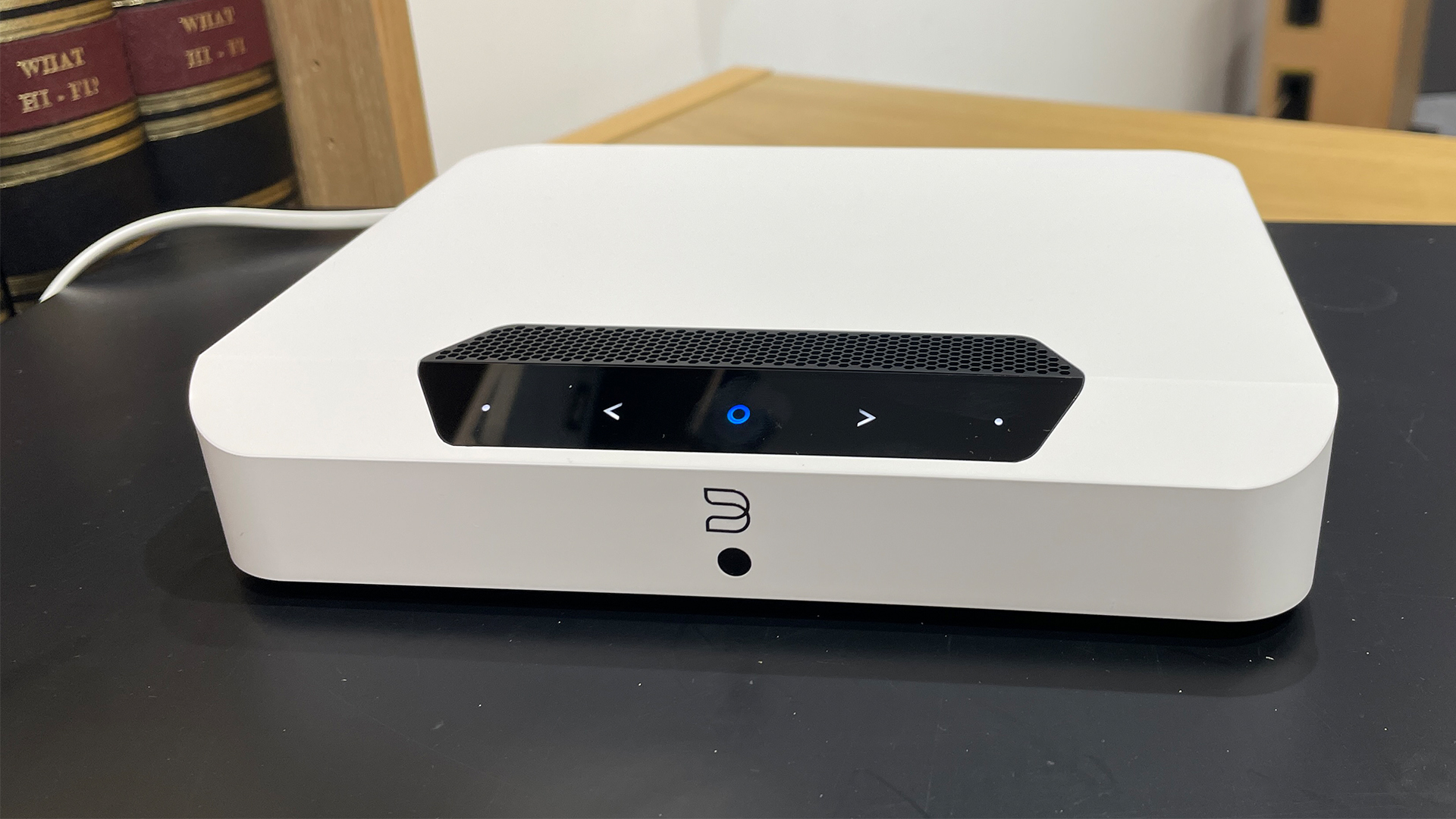What Hi-Fi? Verdict
This mini Powernode Edge is a decent space-saving solution with extensive streaming smarts, but its performance isn’t as slam dunk as its rivals
Pros
- +
Big, clean, capable sound
- +
Ultra-compact design
- +
Excellent streaming features
Cons
- -
No headphone port
- -
Sound lacks outright nuance, dynamics and punch
- -
There are more exciting and compelling rivals
Why you can trust What Hi-Fi?
It could be reductive to call the Bluesound Powernode Edge a smaller, more affordable, cut-down version of the five-star Bluesound Powernode (2021) system, but it’s not far from the truth.
The Powernode Edge (£599) offers network streaming smarts, a complement of connectivity and amplification in a very neat and compact box that you just need to add speakers to. It couldn’t be simpler.
It’s the most affordable just-add-speakers all-in-one system that we’ve come across yet. The bigger Powernode costs £849 / $899 / AU$1599, while the new, smaller Powernode Edge shaves a few hundred off and comes in at just £599 / $649 / AU$1199.
Canadian brand Bluesound has a knack for creating modern-looking boxes designed to fit and blend into any space while still offering a wealth of streaming connections and great sound quality. This latest mini Powernode Edge should be plain sailing, then, but this is starting to become a fiercely-fought category.
Build & design
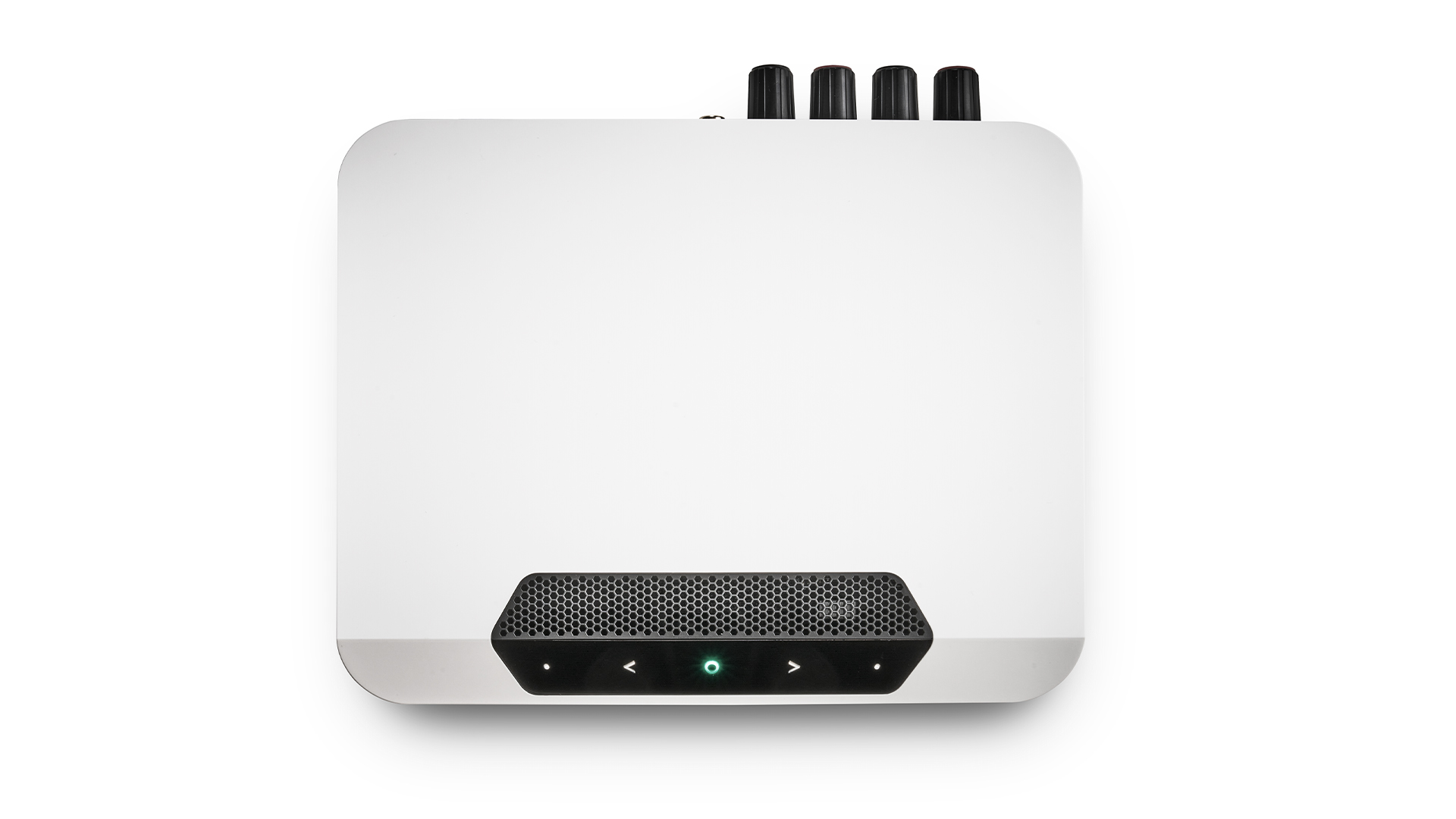
Looking at the two Bluesound Powernode units side-by-side, the difference is obvious. The double-decker look of the Powernode (2021) is out, the Powernode Edge is a single-storey unit. It’s tiny. It looks more like a space-age modem than a traditional just-add-speakers all-in-one system we’re used to seeing from the likes of Naim, Marantz and Cambridge Audio.
What’s still familiar is the ultra-compact design and uncluttered aesthetics that Bluesound has preferred throughout its products. The upshot of this means the Powernode Edge is a unit that can sit anywhere in small rooms: on a desktop, on the self, perched on a TV stand… If your excuse for not investing in a decent hi-fi system so far has been a lack of space, the Edge nixes that excuse immediately.
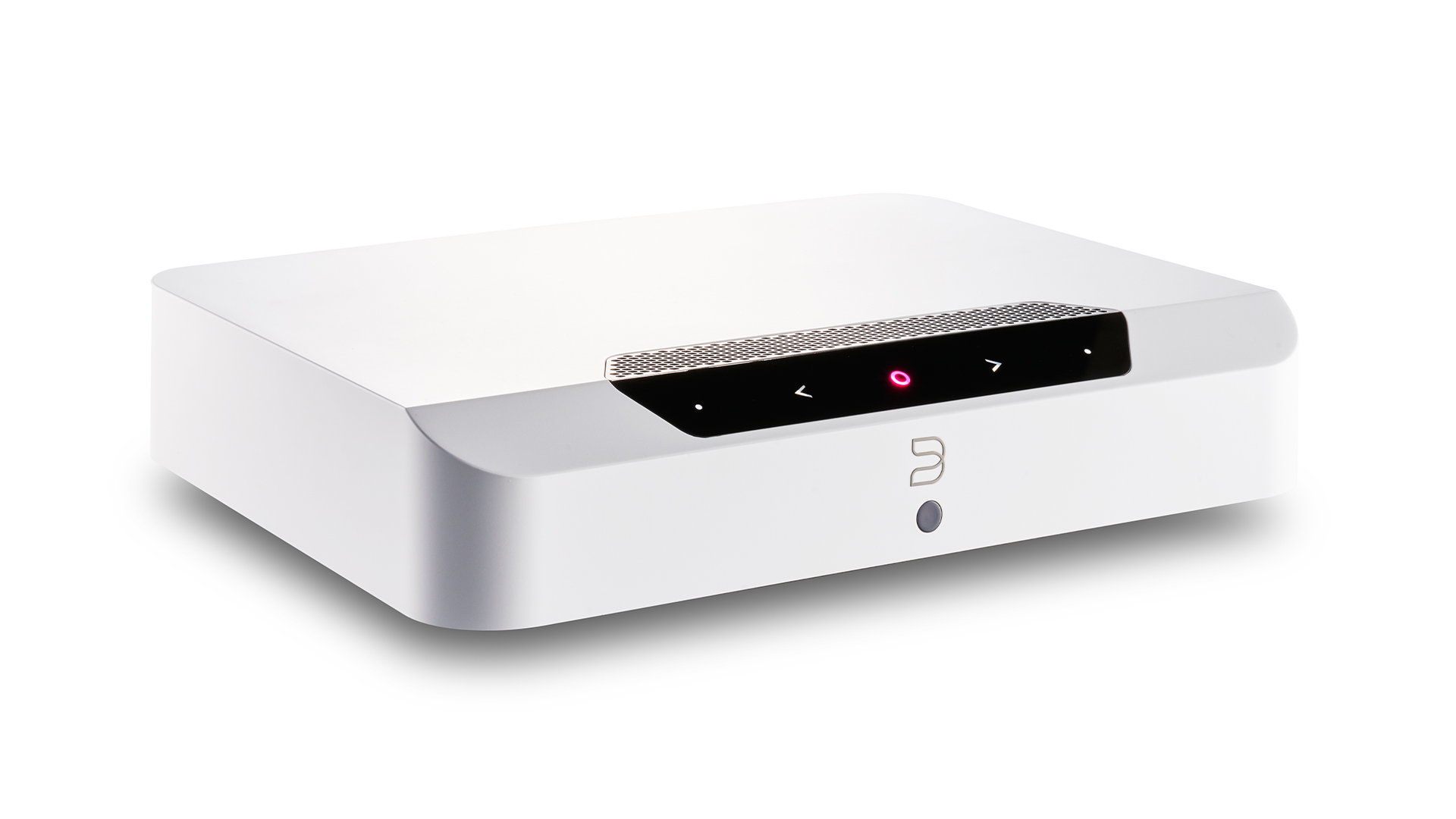
Network Wi-fi, ethernet
Inputs Optical/3.5mm combined, HDMI eARC, USB
Outputs Subwoofer
Headphone output? No
Max file resolution 24-bit/192kHz, MQA
Streaming features AirPlay 2, Bluetooth (aptX HD), Spotify Connect, Tidal Connect, Qobuz, Deezer, Amazon Music, Roon Ready, internet radio
Power output 40 watts per channel
Dimensions (hwd) 4.45 x 21.9 x 193cm
Weight 1.37kg
Finishes x 2 (black, white)
The unit itself is well-built, too. There’s no physical remote included, but there are basic touch controls for playing, pausing, skipping tracks and changing volume on the front panel. They all respond well, and we particularly like the subtle fade in/out effect when pausing or resuming play. It makes a nice change from the abrupt stop/start we normally come across in most products.
Around the back, you’ll find a neat complement of connections: one set of speaker terminals, an HDMI eARC input, a combined digital optical/3.5mm analogue input (an adapter is helpfully included in the box), a USB port, an ethernet port and a subwoofer out. It’s not too dissimilar to the bigger Powernode’s connectivity offer (which has two optical/3.5m inputs), but we think the Edge has kept it simple and sensible while offering a good variety of connections that lets you plug in a TV, a CD player or even an external phono stage (with the help of adapters) for your turntable, for instance.
Don’t be deterred by a lack of a remote, as your main port of control will be through the well-appointed BluOS app on your smartphone or tablet.
Features
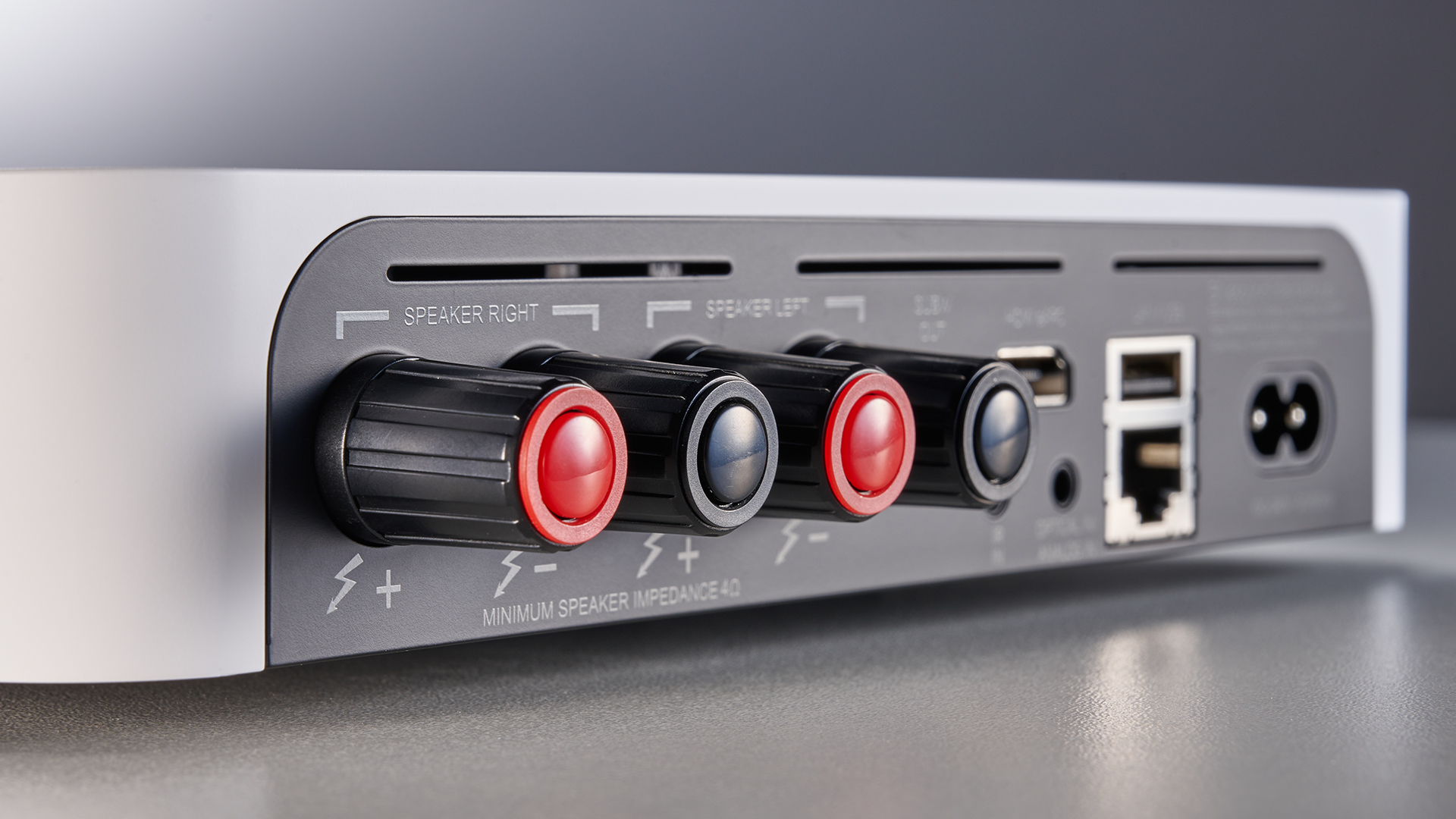
Streaming is where the Bluesound really kicks into gear, thanks to its tried-and-tested BluOS streaming platform and accompanying app. It offers such a wealth of streaming features and versatility that makes the Powernode Edge such a compelling option at this new ‘entry-level’ price point. In short, this Edge has pretty much all of the streaming features you’d get from a Sonos system.
Whether you’re streaming from a smartphone, have music stored on your laptop, use music streaming services or are a high-res audio aficionado, the Bluesound caters to all.
It offers support for the most popular music streaming services through the BluOS Controller app, including Tidal Connect, Amazon Music, Spotify Connect, Qobuz, Deezer, and various internet radio stations. There’s no Apple Music support, however, but subscribers can stream their playlists through the Edge’s onboard AirPlay 2 instead.
We logged into Tidal and our playlists and favourites were easily accessible and a doddle to stream from the app. Once connected to your home network through wi-fi or the more stable ethernet connection), the Edge can also stream music files from any network-connected NAS device, computer or mobile device. Two-way aptX Bluetooth (which acts as a transmitter and receiver) also returns, giving yet another element of playback flexibility.
The app is also where you can organise your multi-room system across other BluOS-compatible devices if you have them, as well as access tonal controls, NAS devices on your network, system settings and more. There are similarities to Sonos’s superb S2 control app in terms of the breadth of options (if not the overall friendliness of the layout), but the BluOS is overall easy to navigate, use and control every aspect of the Powernode Edge with.
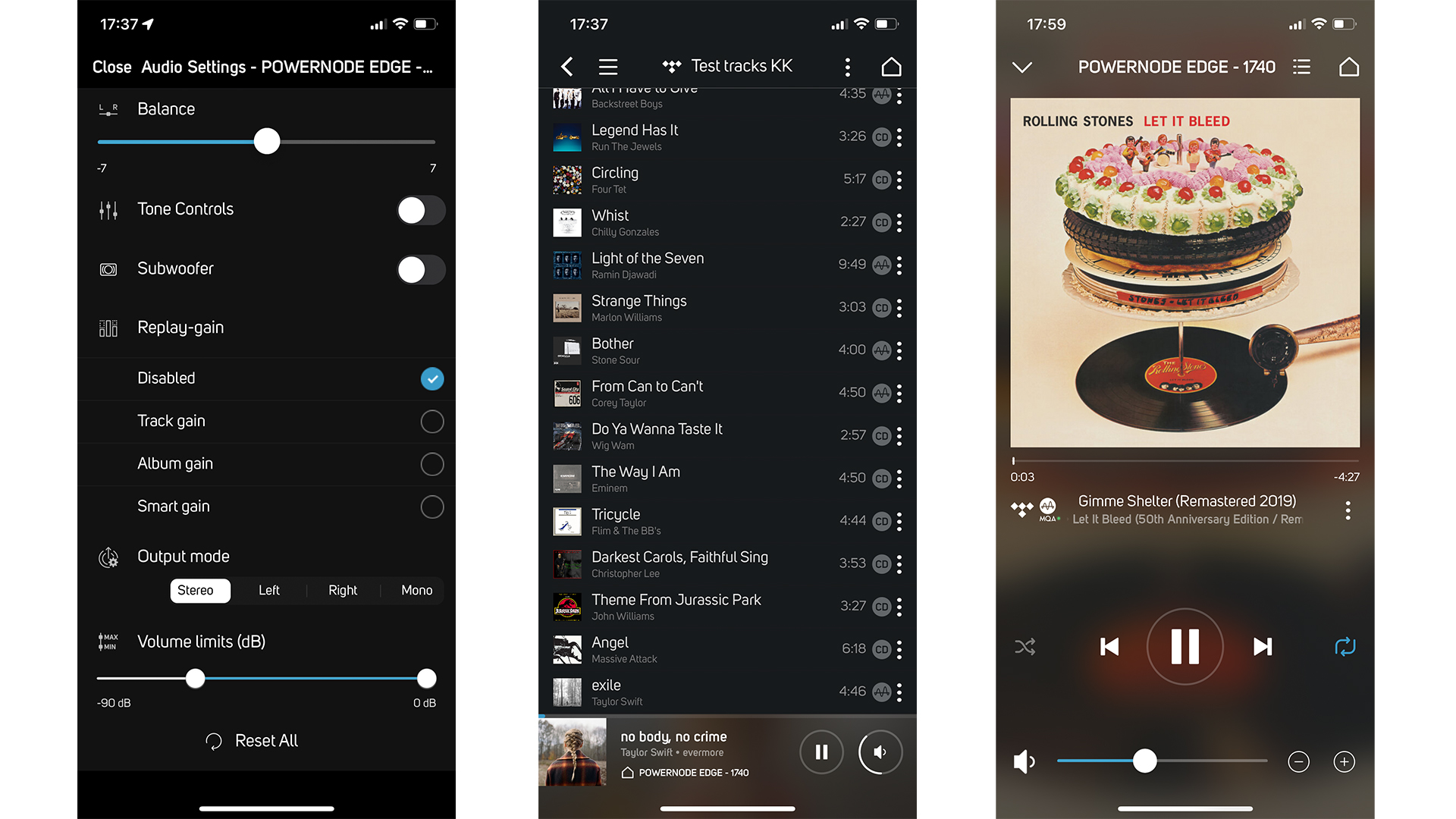
So where has Bluesound made its savings on the more affordable Edge? It’s all inside the tidy unit. While BluOS gives you full access to its streaming features, the hardware components had to be modified, and in some ways limited, to suit the new price point. This means your maximum file resolution support in the Edge is 24-bit/192kHz PCM (the Powernode goes up to 32-bit/384kHz), but all the major file types – PCM, FLAC, MQA – are still supported. We find that this should cover a majority of high-resolution music libraries.
The other big difference is the lack of a headphone port. Where the Powernode features a 3.5mm headphone jack, the Powernode Edge omits this entirely, so there’s no physical way to plug in your trusty cans. The aptX Bluetooth connection should save the day here for wireless headphones users, though.
And finally, the power output is halved. The Edge offers a claimed 40W per channel into 8 ohms through its DirectDigital amplification technology, a step down the Powernode’s 80W per channel with HybridDigital amplification (which was developed by sister-brand NAD). We’ve heard fantastic performers with low-power-rated amplifiers, so that’s not necessarily a mark against the Edge at all here; it’s all in the tuning.
Sound

You’ll be spoilt for choice when it comes to partnering stereo speakers at this level, but we use our trusty reference ATC SCM50 speakers as well as the more price-compatible KEF LS50 Meta speakers for our testing.
Regardless of what method you use to stream and play music through the Powernode Edge, it sounds capable from the start. There’s clarity in spades and an ample amount of big, open space around each instrument. Power and volume aren’t an issue at all: the Powernode Edge can go plenty loud when thrashing out System Of A Down or the more understated Gladiator soundtrack.
There’s a good level of detail, too. Wet Leg’s catchy debut album comes through with all its hazy melodic alt-pop glory; there’s snap to the drums, the rhythm rolls forward in a pleasant manner, and voices come through clear and upfront.
The Edge proves its mettle with the meaty, visceral guitars and brawling tone of System’s B.Y.O.B. – it does well to not deliver it as an amorphous wall of sound (as lesser kit can when faced with heavy metal tracks), and handles the tonal shift from Serj Tankian’s grand, manic vocals to the more melodic chorus well.
Listen longer, however, and we find ourselves simply tuning out the Powernode Edge as it runs through our playlists. While its easy-going manner is commendable, it also shows the cracks in its armour. There’s a lack of dynamic punch, so songs don’t quite land with the impact intended. The Edge isn’t quite as adept when it comes to rhythmical nuance, either, meaning the ebb and flow of songs are shortchanged; we could do with an extra helping of subtlety to the detail levels too.
How does this translate when playing music? It means that Nick Cave’s bittersweet vocals on Into My Arms don’t tug at our heartstrings; he sounds a bit too zippy and not really invested in what he's singing.
The punctuating “Oh No” lyrics in Wet Leg’s song of the same name don’t communicate the droll wit behind that snappy tongue-in-cheek moment, and we could certainly do with more textural subtlety when confronted with deep cellos and soulful violins in Agnes Obel’s Aventine album. It’s simply not as musically expressive or as deft with dynamics as its bigger Powernode brother, or the Award-winning and brilliant-sounding Technics SA-C600, which also adds in a CD player at its £899 / $999 / AU$1749 price.
Verdict

If it’s affordability and compactness you’re after, we could point you in the direction of the Triangle AIO Twin (£699 / $1000 / AU$1099) which dispenses the need for a separate box altogether by having the amplification and streaming smarts all inside the speakers themselves. The feature set is roughly similar between this and the Bluesound, but the Triangle all-in-one speaker system is easily the more entertaining of the two. And you don’t even have to spend extra money on speakers or cables with them.
The Powernode Edge may not be an all-round musical wonder, but it’s competent, compact and versatile – a neat solution. We’d love to see more hi-fi products of this style entering the market as it could form the basis of a truly modern music system.
SCORES
- Sound 4
- Build 5
- Features 4
MORE:
Read our review of the Bluesound Powernode (2021)
Also consider the Marantz PM7000N
Read our Technics SA-C600 review
Best hi-fi systems: micro, vinyl and streaming music systems for the home
What Hi-Fi?, founded in 1976, is the world's leading independent guide to buying and owning hi-fi and home entertainment products. Our comprehensive tests help you buy the very best for your money, with our advice sections giving you step-by-step information on how to get even more from your music and movies. Everything is tested by our dedicated team of in-house reviewers in our custom-built test rooms in London, Reading and Bath. Our coveted five-star rating and Awards are recognised all over the world as the ultimate seal of approval, so you can buy with absolute confidence.
